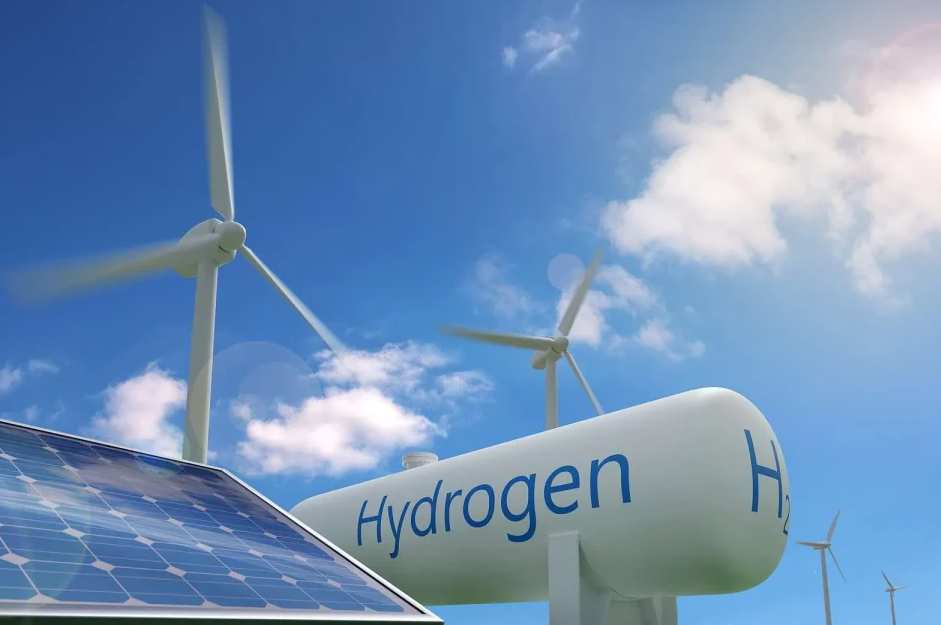Nepal, a country with abundant hydropower resources and an urgent need for sustainable energy solutions, is now looking towards green hydrogen as a critical step in its energy transition.
A recent report titled “Green Hydrogen in Nepal: Unlocking a Sustainable Energy Future”, authored by Madhu K. Marasini and Prajol Joshi and published by South Asia Watch on Trade, Economics and Environment (SAWTEE), outlines both the potential and challenges of this new energy frontier. While the report is a rapid research output and doesn’t cover all technical details, it provides an insightful overview of how Nepal could position green hydrogen at the heart of its energy strategy.
The report begins by setting the global context. Climate change is no longer a distant threat. Its consequences are already being felt in the form of erratic weather, floods, droughts, and rising human and economic losses. Nepal, with its fragile mountain ecosystems and dependence on agriculture, is particularly vulnerable. The main driver of climate change remains the world’s dependence on fossil fuels, which are responsible for 75 percent of global greenhouse gas emissions. Transitioning to cleaner energy sources is not optional—it is essential.
In Nepal’s case, the energy mix still heavily favours traditional sources. As of recent estimates, fuelwood accounts for 63.87 percent and fossil fuels make up 25.80 percent of total energy consumption. In contrast, hydropower, despite Nepal’s natural advantage, only accounts for 7.23 percent of total energy use. This heavy reliance on polluting and outdated energy sources calls for an urgent and strategic shift.
This is where green hydrogen enters the picture. Green hydrogen is produced through the electrolysis of water using electricity generated from renewable sources—like hydro, wind, or solar—making it a clean, emission-free energy carrier. This sets it apart from grey hydrogen, which is made from natural gas and releases carbon dioxide, and blue hydrogen, which is slightly cleaner but still depends on fossil fuels and carbon capture.
As an energy source, green hydrogen is extremely versatile. It can power industries, support heavy transport like trucks and airplanes, and even be converted into green ammonia, a critical ingredient for fertilizers that Nepal currently imports.
The report emphasizes that Nepal has a unique advantage when it comes to producing green hydrogen. The country’s electricity generation is already dominated by hydropower—94.72 percent of total electricity capacity came from hydropower in fiscal year 2023/24. Since 2019, Nepal has gone from being an electricity importer to an exporter. During the wet season, the country generates far more electricity than it can consume, thanks to its reliance on run-of-the-river hydropower projects. This surplus electricity is often wasted due to a lack of storage or demand. However, this surplus could now be used to produce green hydrogen in a commercially viable way, giving new value to what was previously underused energy.
The government has recognized this opportunity. Nepal adopted its first-ever “Green Hydrogen Policy” in January 2025, followed by the “Energy Development Roadmap” in 2024. There are signs of growing momentum. For instance, a Rs 26 billion green hydrogen-powered fertilizer plant is being planned in Koshi Province. The government is also offering incentives like tax exemptions on necessary machinery and a five-year income tax holiday for green hydrogen companies. These are positive signs that Nepal is treating green hydrogen as more than just an idea—it is being built into policy and investment frameworks.
Globally, countries like India, Japan, the UAE, and those in the European Union have already launched aggressive plans to develop green hydrogen economies. Nepal can learn from these examples while tailoring its strategy to local strengths. The combination of political will, hydropower surplus, and regional demand offers a strong base for Nepal to become a green hydrogen hub in South Asia.
However, the journey ahead is not without significant challenges. One major issue is the cost. In a local test, producing green hydrogen cost around US$5 per kilogram. To put this in perspective, using green hydrogen to travel 100 kilometers is much more expensive than doing the same journey in an electric vehicle. Large-scale production and technological advancements are needed to bring down these costs. Additionally, there is a lack of infrastructure to store and transport hydrogen safely. Regulatory frameworks are still being developed, and safety standards are not yet fully established. The report notes that a successful green hydrogen sector will require not just investment in technology, but also in legal frameworks, safety protocols, and market infrastructure.
There are also gaps in data and analysis. The report points to seasonal electricity surpluses but does not provide a precise estimate of how much surplus energy is actually available for hydrogen production. Since Nepal’s hydropower system is largely run-of-the-river, electricity generation can vary widely between wet and dry seasons. This variability could impact the efficiency of hydrogen production systems, which require a stable supply of electricity.
There are also questions about market demand. While fertilizer production is a clear domestic use case for green hydrogen, the report does not thoroughly examine other industries within Nepal that could become major consumers. Identifying early adopters and assessing their current energy needs would help create a more targeted rollout strategy.
To move forward, the report suggests practical steps. These include developing detailed legal frameworks, offering financial and non-financial incentives, encouraging foreign investment, and setting up dedicated institutions for research and development. It also recommends launching pilot projects to test the feasibility of green hydrogen in the Nepali context. However, a detailed roadmap—laying out what to do in the short term, medium term, and long term—is missing. A timeline with clear milestones and interdependencies would help ensure the transition is well-coordinated and achievable.
Despite these limitations, the report is a timely and much-needed contribution. It clearly presents green hydrogen as a realistic and promising path forward for Nepal’s clean energy future. It builds a strong case by combining global urgency, local opportunity, and early policy action. Nepal has the chance to use its natural resources not just to light homes, but to power a national transformation—reducing its dependence on imported fossil fuels, improving energy security, and contributing to the fight against climate change.
In many ways, Nepal’s green hydrogen journey is just beginning. But as this report shows, the foundation is already in place. The country has the hydropower capacity, the policy direction, and the regional relevance. With smart planning, focused investment, and international collaboration, Nepal can lead the way in clean energy innovation—offering a blueprint for other developing nations facing similar challenges. The road ahead will be long and complex, but it could very well lead to a cleaner, safer, and more energy-secure Nepal.



Comment Here